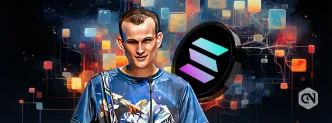In mid-February, the final testnet of the Ethereum blockchain was established, and the Dencun upgrade is now operational on most mainnets. Dencun will now enhance the Ethereum network and all dependent layer-2 systems. The integration of EIP-4844’s new transaction type into Ethereum, which permits “blobs” of data to be temporarily cached in the beacon node, has rendered transactions virtually costless.
Known technically as Proto-Danksharding, this mechanism increases network scalability. It decreases the cost of roll-up transactions by permitting the addition of massive data packets (called blobs), such as in Ethereum transactions. However, these blobs are temporary and cannot be stored for more than eighteen days before pruning.
It is no surprise that blobs have an ephemeral nature, given that they solidify rollup performance and efficiency with the perpetual storage of an exponential volume of blob data on Layer 1. Although disappearing blobs escalate the efficiency of the layer-2 network, they also pose a difficulty in maintaining historical records, which is frequently necessary for developers operating on the network. To combat such challenges, The Graph offers a viable approach to preserve the blobs, guaranteeing their long-term accessibility while helping Ethereum’s progress towards Danksharding.
Advertisement
A collaborative effort among developers from The Graph, Pinax, and StreamingFast has created an efficient solution for indexing and storing binary data. Combining several essential technologies, including Firehose and Substreams, enables data extraction in a scalable and rapid format.
Because blob data resides on the consensus clients (the “consensus layer”), The Graph Network has devised a new Firehose compliant with the Beacon Node. This successfully showcases the rapid construction of a new Firehose for any specific chain using the new poller-based method that relies on one Ethereum Blobs Substreams.
These substreams allow data to be retrieved simply and tactfully from Firehose-enabled Beacon Chain Substreams through the gRPC API. The second way would be the Firehose, powered by Blobs Substreams, which retrieves data from a Substreams-powered subgraph through the GraphQL API, which is accessible on The Graph Network.
Advertisement
The Graph maintains an all-encompassing vision incorporating new data services and query languages, thereby ensuring that the decentralized is well equipped for any use cases, now and in the foreseeable future, as the demand for data in Web3 continues to rise.







